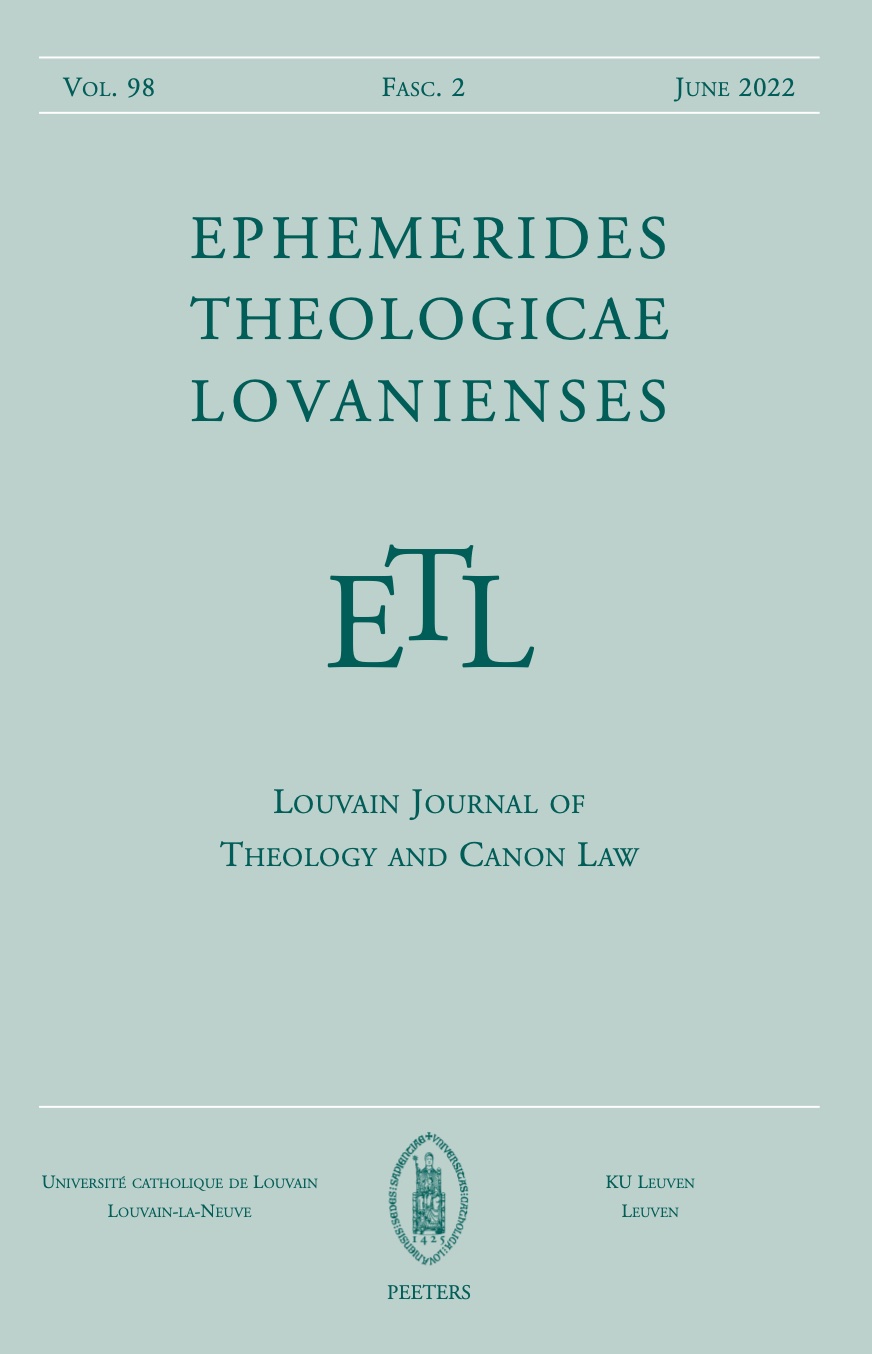 previous article in this issue previous article in this issue | next article in this issue  |

Preview first page |
Document Details : Title: Style and Meaning in Gregory of Nyssa's Panegyrics on Martyrs Author(s): LEEMANS, Johan Journal: Ephemerides Theologicae Lovanienses Volume: 81 Issue: 1 Date: April 2005 Pages: 109-129 DOI: 10.2143/ETL.81.1.616504 Abstract : The writings and sermons of the Cappadocian Fathers were deeply indebted to the inheritance of the classical rhetoric of the Second Sophistic. This contribution studies the use of this rhetoric in Gregory’s panegyrics on martyrs: the Homily on Theodore the Recruit, the First (Ia and Ib) and Second Homilies on the Forty Martyrs of Sebaste and the First and Second Homily on Stephen the Protomartyr. In particular, it focuses on how the literary style of these sermons – one element of rhetoric – supports the message the preacher wanted to convey to his audience. The primary purpose of these sermons was to extol and praise the martyr’s achievements and the Christian virtues to which he or she bore testimony, thus presenting him as a spiritual model worthy of imitation. Subsidiary goals were the polemic against other religions or Christian currents considered as heterodox as well as moral exhortations to the audience. This meaning was not only generated by the content of the sermons but also by the application of stylistic features that underline the presence of these themes in Gregory’s martyrial homilies. From this perspective, we study Gregory’s use of hyperbole, comparisons, periphrastic turns, paratactic and antithetic parallellisms, fictitious monologues and dialogues, and ecphrasis. We give ample illustrations of the presence of each feature in our chosen sermons and in each case we address the question: how did this particular stylistic feature generate meaning and how did it serve the homilist’s purposes? |
|


